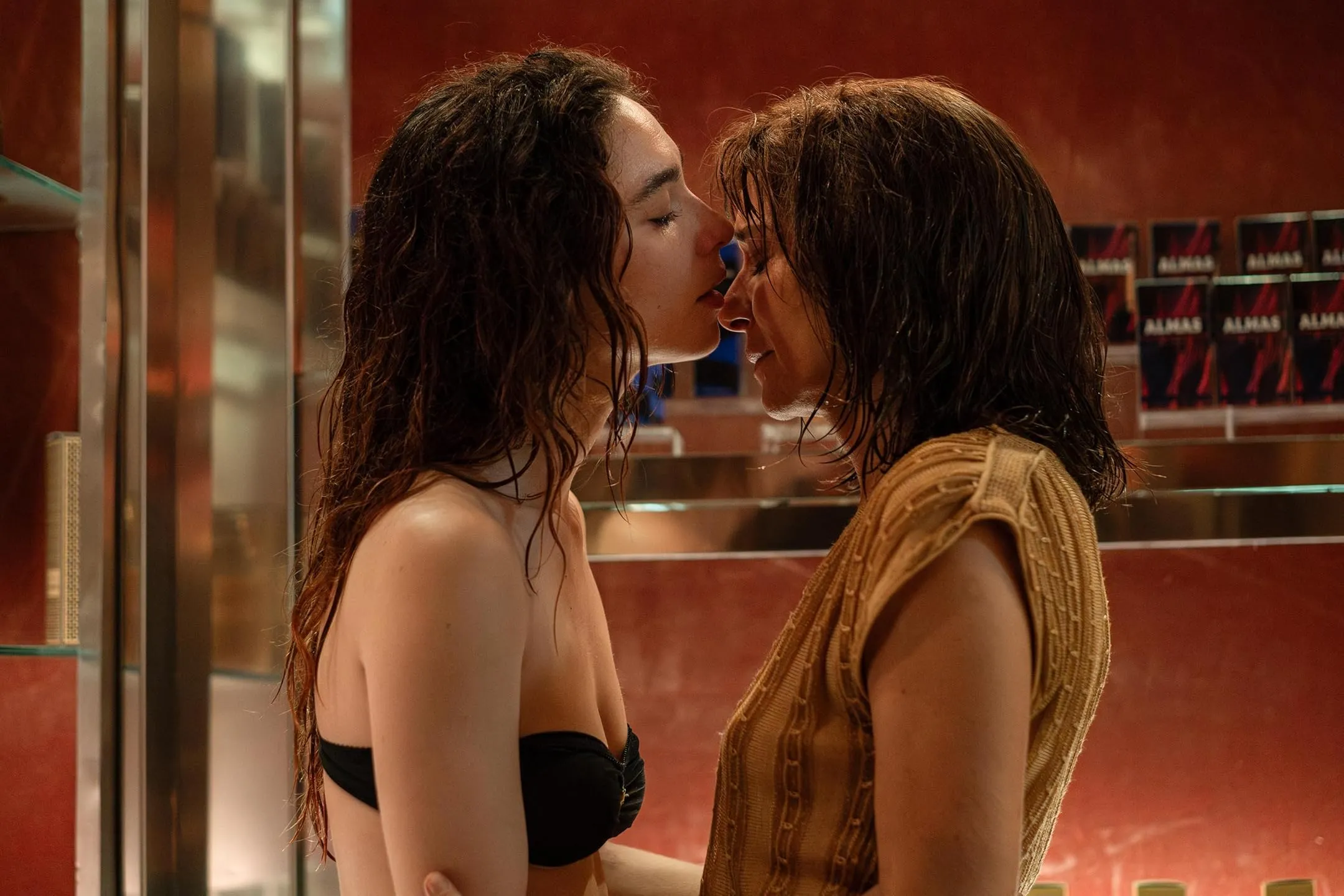Mario Martone’s Fuori plunges viewers into the paradox of liberation found within Rome’s Rebibbia prison, where writer Goliarda Sapienza (Valeria Golino) spends five transformative days in 1980. Against a backdrop of sun-drenched cobblestones and towering concrete walls, the film sketches a portrait of creative rebirth born from enforced solitude.
Martone—whose work often channels Italian neorealist roots—teams with Golino, who brings an insider’s intimacy to Sapienza after adapting her magnum opus The Art of Joy. Together they evoke a world that feels both local and universal: Sapienza’s search for voice amid bars and barred thoughts parallels the hunger for authenticity seen in India’s parallel cinema of the 1970s and ’80s.
As political unrest simmers offscreen, Fuori focuses on small acts—a shared cigarette, a fleeting embrace—that ripple outward into artistic awakening. The film announces its themes of freedom, solidarity and self-discovery with graceful restraint, inviting a global audience to witness a singular moment that feels both distinctly Roman and resonant with cross-border struggles for expression.
Temporal Threads: Narrative Structure and Rhythm
Fuori unfolds as a braided tapestry of past, present and future, its non-linear editing echoing the disjunction of memory and invention. The viewer first glimpses Sapienza’s arrest and the stark ritual of her strip-search, then is whisked to her free-wheeling joyride through Rome’s narrow alleys in an open-top coupé.
Key beats—those first wary encounters in the exercise yard, the whispered confidences over shared cigarettes, the climactic fist fight—repeat across time, each iteration revealing new emotional contours. This approach mirrors the elliptical rhythms of Indian art-house classics like Mrinal Sen’s Calcutta 71, where narrative digressions invite deeper reflection on character.
Editor Jacopo Quadri’s cuts sometimes jar, creating suspense or deliberate ambiguity: a hallway shot becomes a memory of confinement, a café scene transforms into an echo of solidarity.
At moments the pace decelerates for contemplative close-ups—Sapienza’s pensive gaze, Roberta’s tremor of vulnerability—then accelerates into Robert Wyatt–scored montages that feel almost ecstatic. These rhythmic swings sustain engagement, prompting viewers to assemble Sapienza’s story as one might reconstruct a fragmented fresco.
Bonds Beyond Bars: Character Dynamics and Performances
At its heart, Fuori is a study of female alliance forged amid iron railings and whispered secrets. Sapienza and Roberta (Matilda De Angelis) spark to life in their first yard-side encounter: the older writer’s tentative outreach met by the younger prisoner’s wary challenge.
Their rapport deepens in shared rituals—a furtive wash in a graffiti-scrawled bathroom, an impromptu shower scene tinged with ritualistic intimacy—each moment hinting at a mother-daughter mirage. Golino’s Sapienza moves with measured poise, her voice quavering only when memory flickers; she carries the weight of unmet ambitions and late-blooming rebellion.
De Angelis counters with a combustible energy: her Roberta navigates heroin withdrawal and political disillusionment with jagged grace, a rebel whose impulses both liberate and endanger. Elodie’s Barbara offers a softer echo, her fragile entrepreneurship in a perfume shop symbolizing women’s fragile autonomy outside prison walls.
Even minor figures—the officious guard, Sapienza’s distant husband Angelo—underscore the writer’s exile from familiar circles. Together, these performances intertwine in a mosaic of trust, friction and mutual inspiration.
Light, Sound and Symbols: Technical Craft and Thematic Resonance
Martone and cinematographer Paolo Carnera bathe Fuori in sunlight that can feel as unforgiving as prison bars, contrasting open plazas with the claustrophobic geometry of Rebibbia’s corridors. Carmine Guarino’s production design amplifies this tension: a bookcase swings aside to reveal a cramped kitchen, a perfume-shop display conceals a peeling-tile washroom—spaces that morph like memory itself.
The sparse soundtrack, anchored by Robert Wyatt’s plaintive songs, introduces an off-kilter lyricism more akin to European experimental cinema than to traditional Bollywood scores, yet it resonates with Indian parallel films that deploy minimal music for maximum emotional effect.
Costume and makeup subtly align Sapienza with Roberta—shared hairstyles, mirrored dress tones—suggesting a porous boundary between mentor and muse. Bars, open roads and shattered glass recur as visual leitmotifs, underscoring the paradox of creative freedom born in confinement.
Political undercurrents—class tensions, feminist assertion, the shadow of Italy’s Red Brigades—surface in overheard radio broadcasts and graffiti fragments, inviting viewers to draw parallels with cross-cultural struggles for voice. Through these elements, Fuori transforms a brief jail term into a universal fable of resilience and rebirth.
Fuori had its world premiere in competition at the 78th Cannes Film Festival on May 20, 2025, and is scheduled for theatrical release in Italy on May 22, 2025.
Full Credits
Director: Mario Martone
Writers: Mario Martone, Ippolita Di Majo
Producers: Nicola Giuliano, Francesca Cima, Carlotta Calori, Viola Prestieri, Annamaria Morelli
Executive Producer: Giorgio Magliulo
Cast: Valeria Golino (as Goliarda Sapienza), Matilda De Angelis (as Roberta), Elodie Di Patrizi (as Barbara), Corrado Fortuna, Stefano Dionisi, Antonio Gerardi, Francesco Gheghi
Director of Photography (Cinematographer): Paolo Carnera
Editor: Jacopo Quadri
Composer: Valerio Vigliar
The Review
Fuori
Fuori unfolds as a luminous study of confinement’s surprising gift to creativity, led by Valeria Golino’s measured restraint and Matilda De Angelis’s fierce vitality. Martone’s fractured timeline and Paolo Carnera’s unforgiving sunlight evoke Rome’s paradox of openness and enclosure, while Robert Wyatt’s offbeat score lends an idiosyncratic rhythm. Though its episodic shifts can briefly stall momentum, the film’s poetic tension sustains a compelling portrait of solidarity and self-discovery.
PROS
- Valeria Golino’s nuanced portrayal of Goliarda Sapienza
- Matilda De Angelis’s electric energy as Roberta
- Paolo Carnera’s sunlit, contrast-rich cinematography
- Robert Wyatt soundtrack that underscores emotional shifts
- Strong thematic focus on freedom and creative rebirth
CONS
- Pacing can stall during non-linear shifts
- Episodic structure sometimes feels disjointed
- Political backdrop remains underexplored
- Occasional tonal jolt in the shower sequence
- Secondary characters receive limited development
